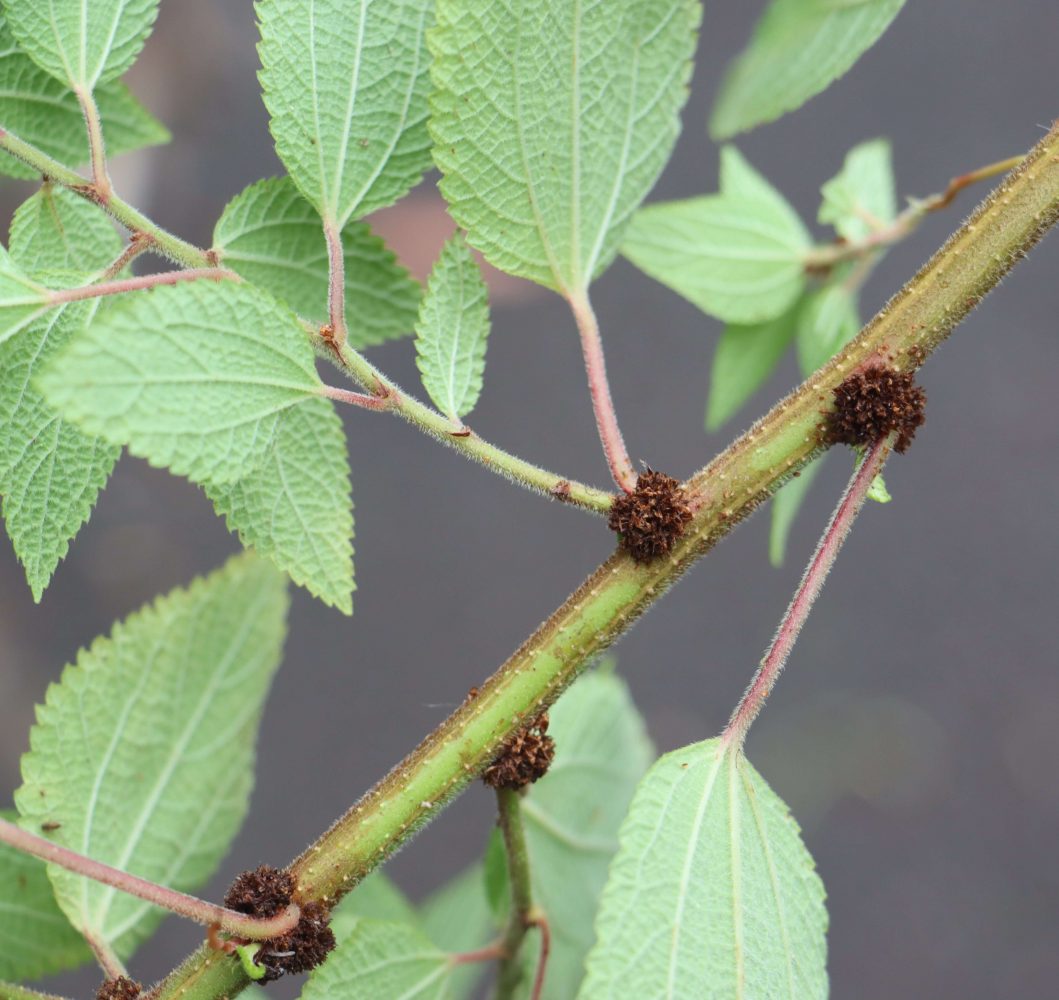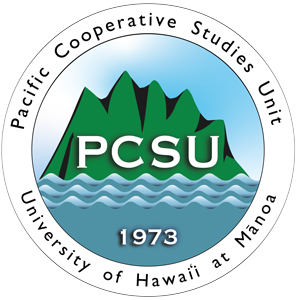
Phenax hirtus
Containment species: Report if seen outside of Kaloko Mauka
This plant was first detected growing and spreading on the Kona side near the Makaula-O’oma State Forest Reserve in 2017. By 2020, Phenax has formed dense 15-foot tall thickets that have begun to spread along the roadside, trails, and into the native forest reserve. Identified in 2020 as Phenax hirtus, this tropical shrub in the Urticaceae (nettle) family is native to Central and South America. The plant thrives in tropical climates, especially in disturbed, moist, shady environments, but can grow in undisturbed environments and mixed in with heavy vegetation. Most commonly found above 1000 meters in elevation, but as it is new to Hawaii, we do not know what the elevation range here is. The fruit is easily dispersed by wind and water, allowing it to spread quickly.
It belongs in the nettle family, the same large family as our native māmaki, and could be confused for the native plant. Phenax leaves are smaller and skinnier (lanceolate), while māmaki leaves are bigger and wider (cordate to ovate). Māmaki generally, though not always, displays a red color in the petiole and in the veins while Phenax is more green throughout, with much less red in the petiole. Both species can be highly variable in form, however, so the best method of distinguishing between them is to look for fruits at the leaf node (where the leaf meets the stem): māmaki will have a fleshy white fruit filled with seed, while Phenax produces a dry brown ball.


Description
- Sprawling shrub
- Variable leaf size: 1′-5′
- Teardrop-shaped leaves with serrated edges
- Leaf-within-a-leaf venation pattern
- Inflorescence (a bunch of tiny flowers) form at leaf nodes.
Impacts
- Forms dense thickets that prevent the establishment of other species
- Occurs near and could threaten the endangered Hawaiian species
- Closley related species are reported to be a crop weed of bananas, orchards and plantations




Photos (L-R): Forest & Kim Starr and J.B. Friday
What we do at BIISC
Our crews are working to remove Phenax from the easement and trail sides to prevent continued spread, and are encouraging homeowners in the Kaloko Mauka area to actively look for and remove any plants that may have spread onto their property. If you find something that looks like Phenax in areas outside the area indicated on the map, please take several pictures and contact us at biisc@hawaii.edu.
Little is known about this plant, and it does not show invasive qualities in other places of the world. This plant is considered high risk by the Hawaii Pacific Weed Risk Assessment. Check out the report at plantpono.org.
Controlling Phenax
Smaller plants are pulled by hand. A Foliar spray of 4% Round Up Pro Max is effective for controlling dense thickets.
